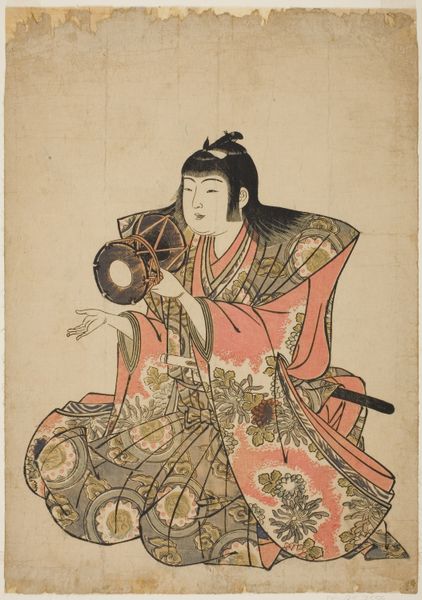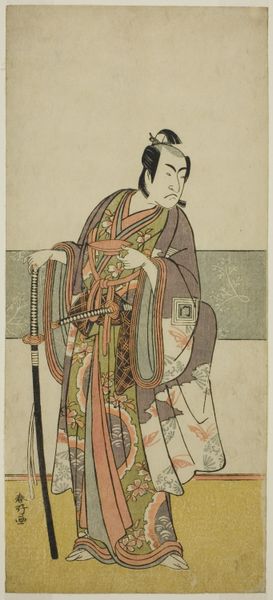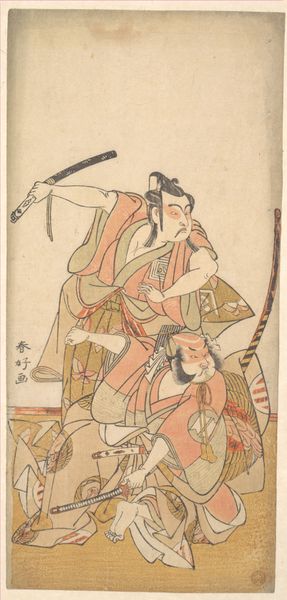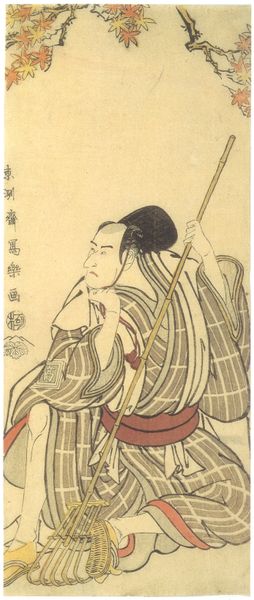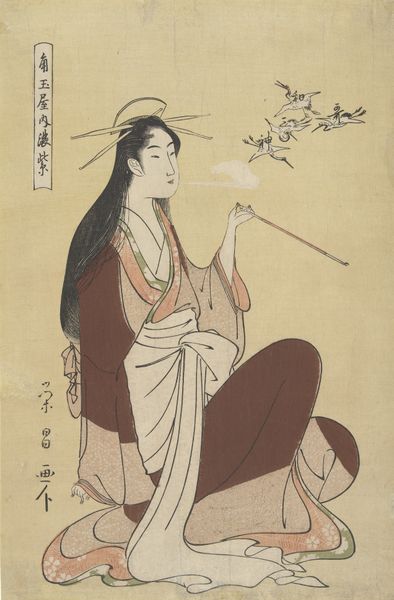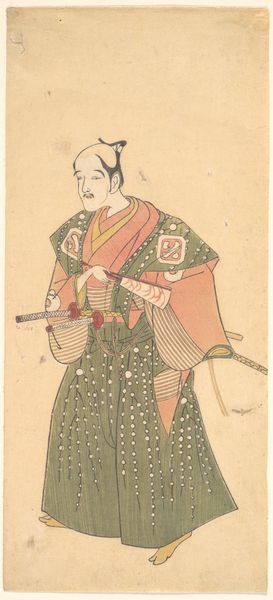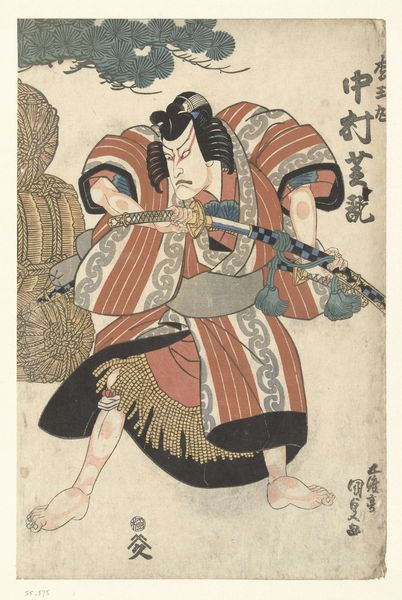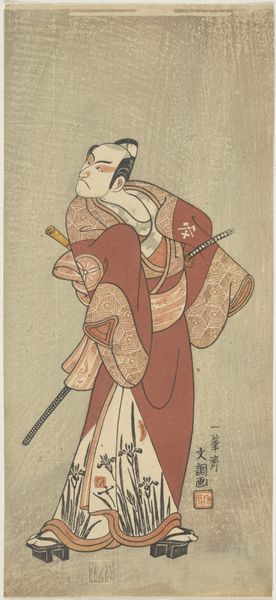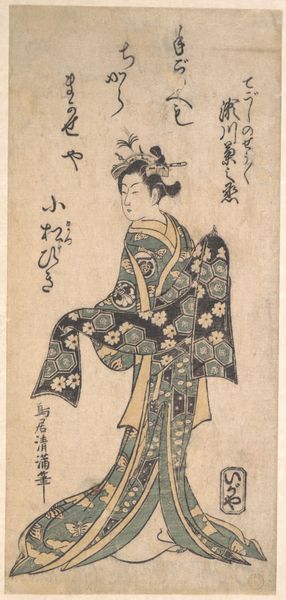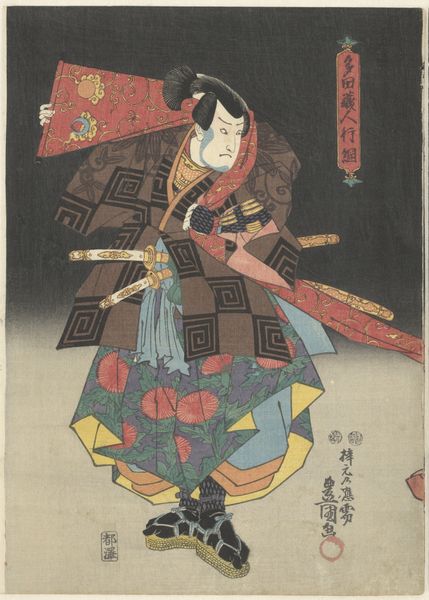
A Doll Representing a Boy Playing a Flute 1770 - 1790
0:00
0:00
print, woodblock-print
#
portrait
#
ink drawing
# print
#
asian-art
#
ukiyo-e
#
figuration
#
woodblock-print
#
genre-painting
Dimensions: 10 x 7 1/8 in. (25.4 x 18.1 cm)
Copyright: Public Domain
Curator: Let's turn our attention to "A Doll Representing a Boy Playing a Flute," a woodblock print created by Torii Kiyonaga around 1770-1790. It's currently housed here at the Metropolitan Museum of Art. Editor: Immediately, I'm struck by the overall delicacy. The lines are so refined, the colors muted and harmonious, contributing to a serene, almost melancholic mood. It’s all in the precise application and distribution of tones. Curator: It's fascinating how Kiyonaga’s work bridges the aesthetic sensibilities of the late 18th century with social commentary. Figures like this young boy, positioned on the cusp of adulthood, reflect evolving gender roles and expectations of youth during the Edo period. His ambiguous presentation challenges conventional masculine ideals. Editor: Indeed, his poise is striking, the central composition placing emphasis on the careful orchestration of hands and instrument, leading the viewer’s eye along defined diagonal axes. The design printed on his kimono, that’s also crucial, notice the complex layers and how well they harmonize with the shape of the flute, like semiotic elements arranged on stage to create specific meaning. Curator: The very choice of depicting a young male in a traditionally feminine, decorative kimono opens a dialogue about performativity. Was he intended as a mascot to sell the clothing? Or did this artist actively challenge the system of established societal hierarchies? And, if the work was indeed to sell kimonos, wouldn't the kimono stand as the sole focus, instead of focusing, as it does, on the musician? Editor: The way the artist captured those tiny adjustments with his hands as he tunes his music, yes, definitely adds a subtle human depth which speaks volumes. You get the idea he must perform to entertain himself or perhaps is attempting a quiet, musical revolution of self. Curator: It reminds us that representations are never neutral. Art acts as a mirror to culture but also can provide a powerful space for resistance. We must continue questioning accepted assumptions about power dynamics between genders and children, exploring stories in their multifaceted ways, as suggested by Torii Kiyonaga. Editor: The focus of the musician adds an emotional weight. It makes the piece deeply memorable for its elegance. A small key to access the past, a time when even a toy-like child has great responsibilities and a strong sense of personal style.
Comments
No comments
Be the first to comment and join the conversation on the ultimate creative platform.

